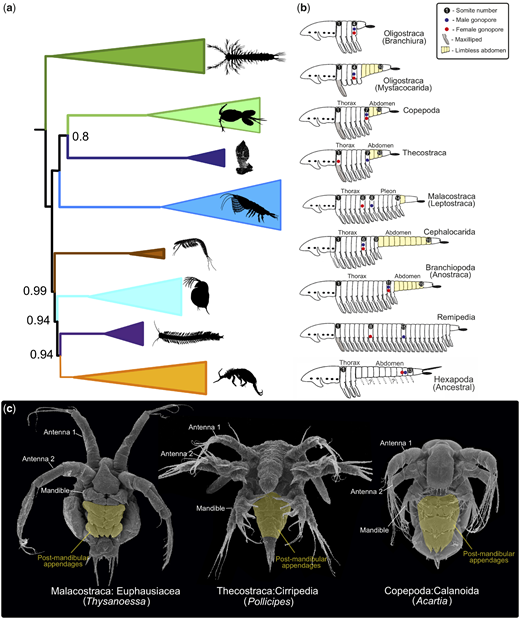Recent IGNITE- supported research assembled the most taxon-rich phylogenomic pancrustacean data set to date and analyzed it using a variety of methodological approaches. Low levels of missing data were prioritized. Findings show that some clades were consistently recovered independently of the analytical approach used. These include, for example, Oligostraca and Altocrustacea. Substantial support was also found for Allotriocarida, with Remipedia as the sister of Hexapoda (i.e., Labiocarida), and Branchiopoda as the sister of Labiocarida, a clade that we name Athalassocarida (=”nonmarine shrimps”). Within Allotriocarida, Cephalocarida was found as the sister of Athalassocarida. Finally, moderate support was found for Hexanauplia (Copepoda as sister to Thecostraca) in alliance with Malacostraca. Mapping key crustacean tagmosis patterns and developmental characters across the revised phylogeny suggests that the ancestral pancrustacean was relatively short-bodied, with extreme body elongation and anamorphic development emerging later in pancrustacean evolution.

Some classical crustacean characters relating to tagmosis and development mapped on a summarized version of the most robust phylogeny
This paper was written by ESR Project 8: Ecdysozoa as a model system to test early animal evolution. This team explores Ecdysozoa, e.g. priapulid worms and arthropods. Ecdysozoa dominated the Cambrian, but while extant ecdysozoans include both microscopic and macroscopic species, it is unclear whether Precambrian ecdysozoans are unknown because they were microscopic or because they did not exist yet. Researchers use genomic information to test whether Ecdysozoa had a hidden Precambrian history.
Original source: Jesus Lozano-Fernandez, Mattia Giacomelli, James F Fleming, Albert Chen, Jakob Vinther, Philip Francis Thomsen, Henrik Glenner, Ferran Palero, David A Legg, Thomas M Iliffe, Davide Pisani, Jørgen Olesen, Pancrustacean Evolution Illuminated by Taxon-Rich Genomic-Scale Data Sets with an Expanded Remipede Sampling, Genome Biology and Evolution, Volume 11, Issue 8, August 2019, Pages 2055–2070, https://doi.org/10.1093/gbe/evz097